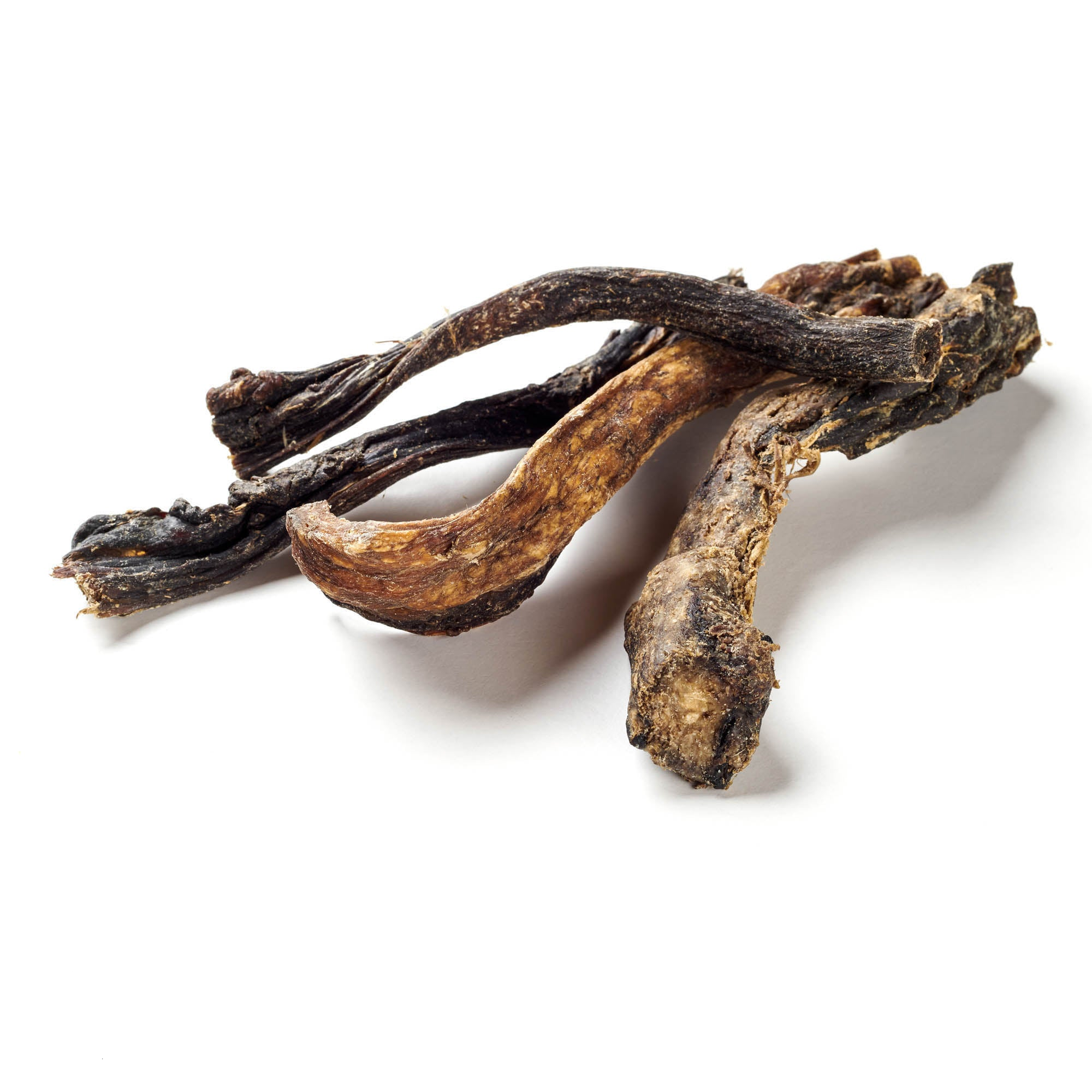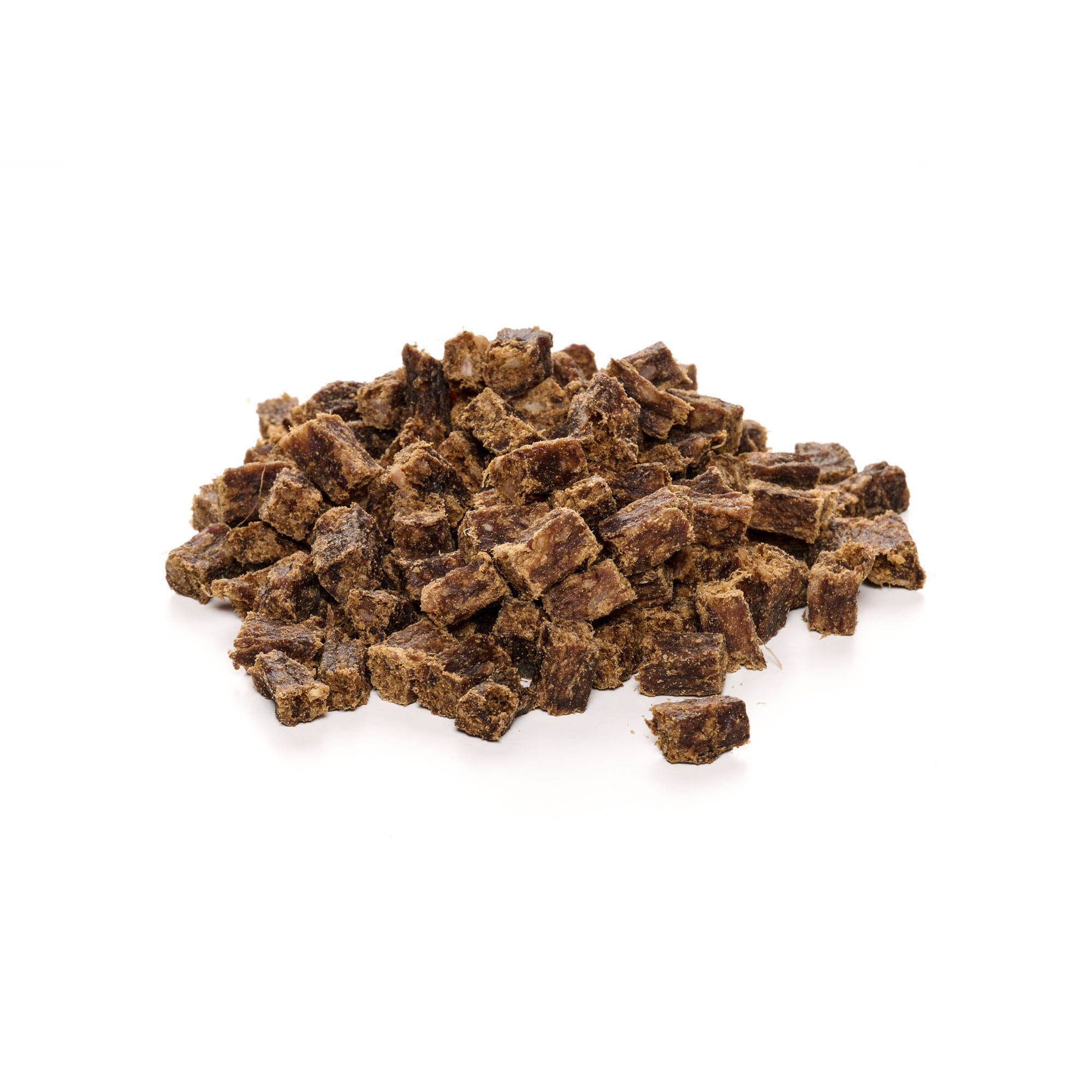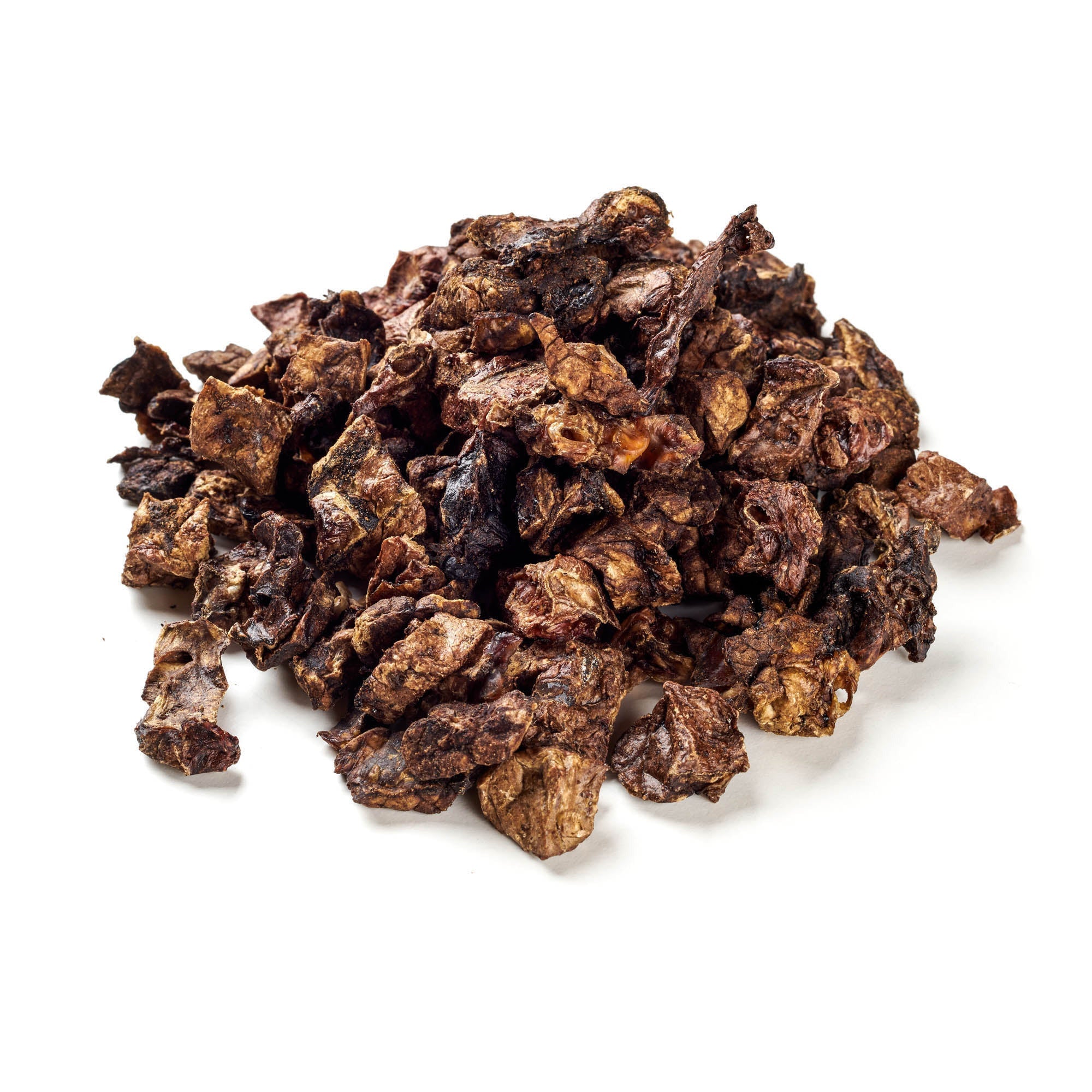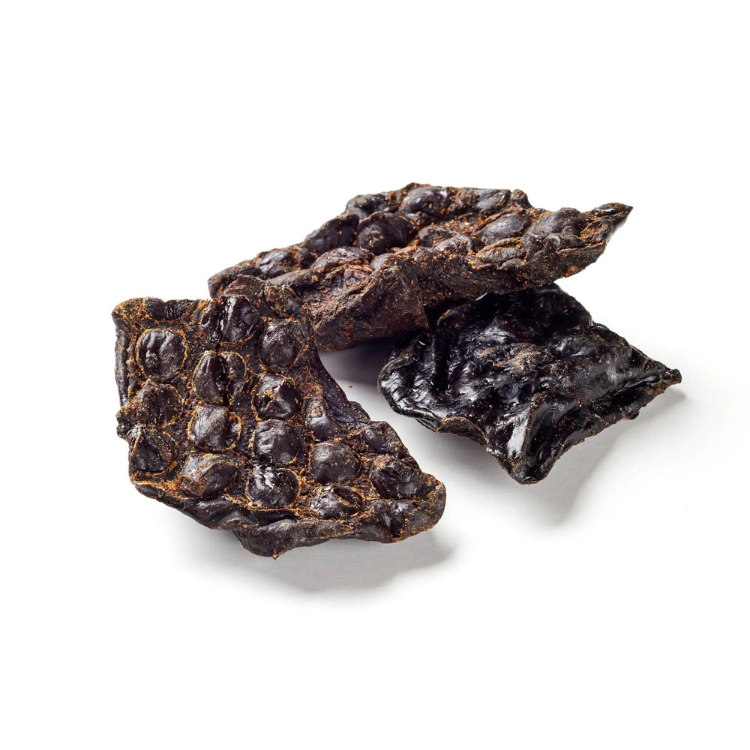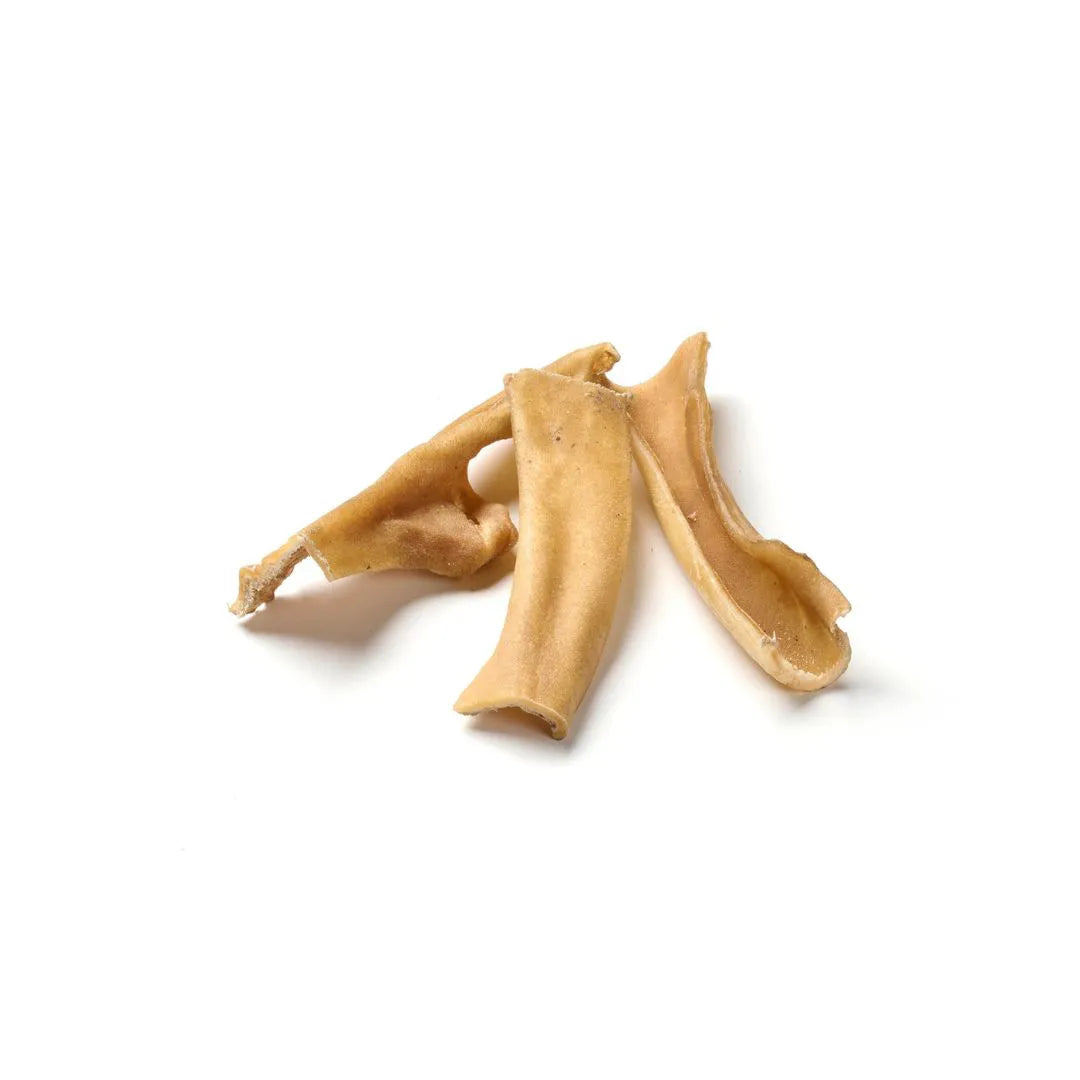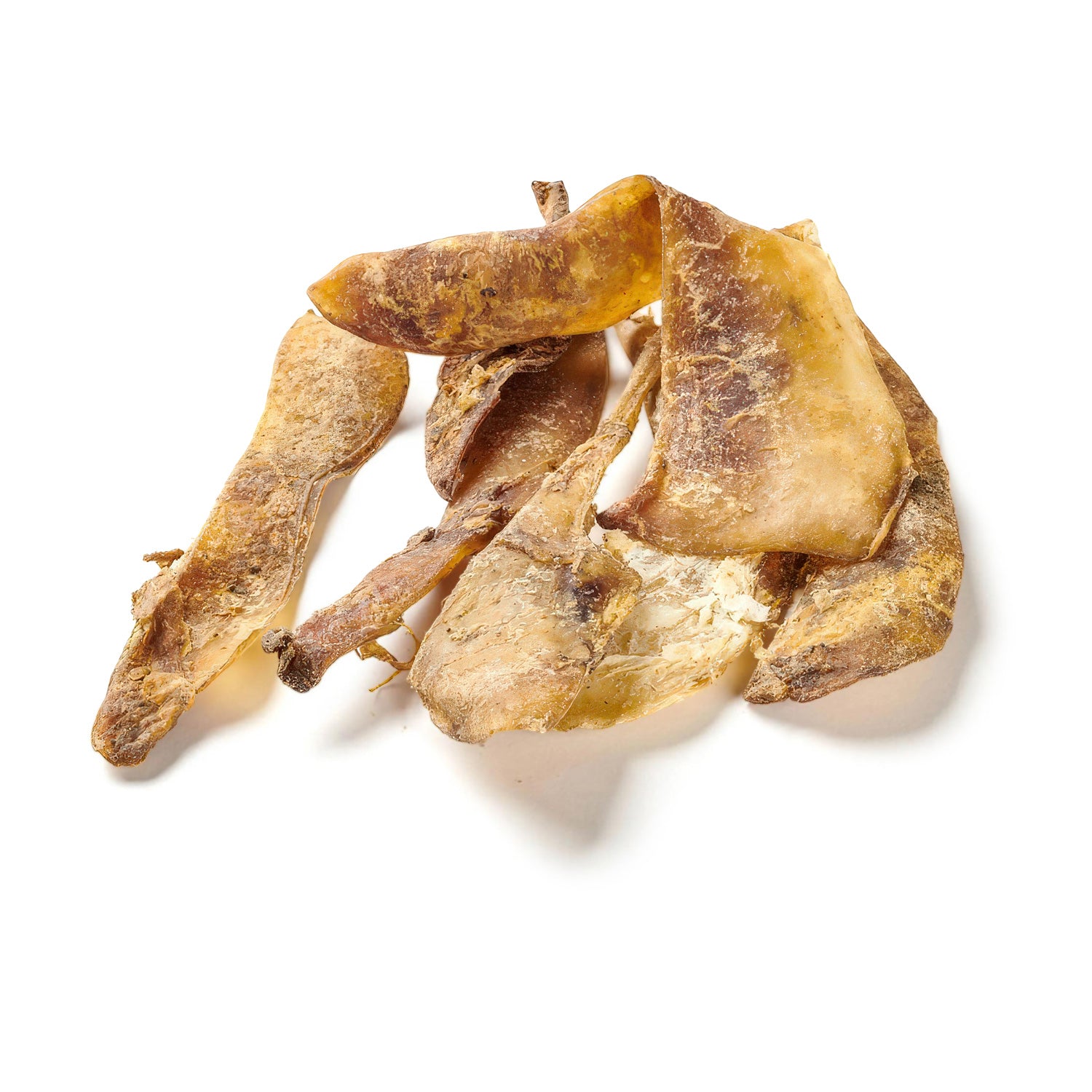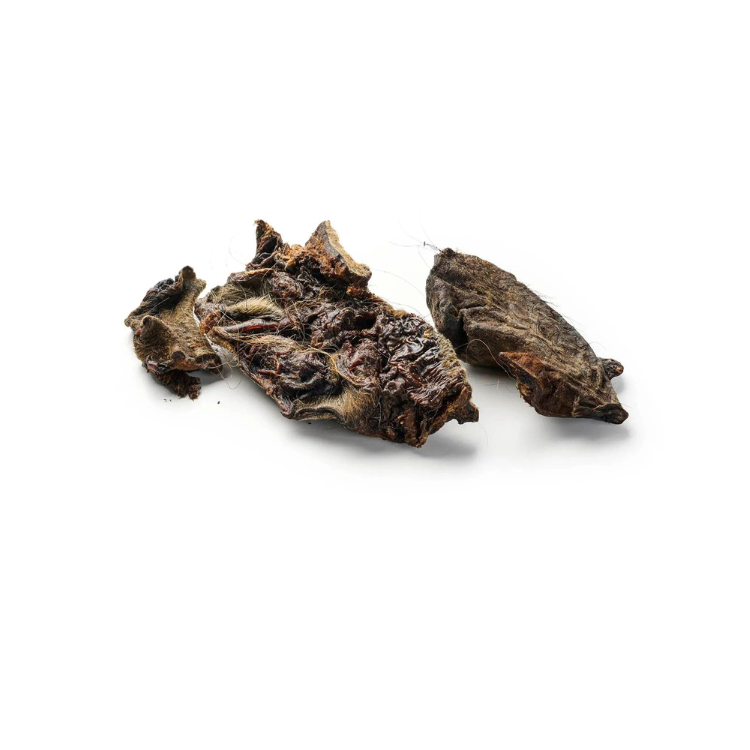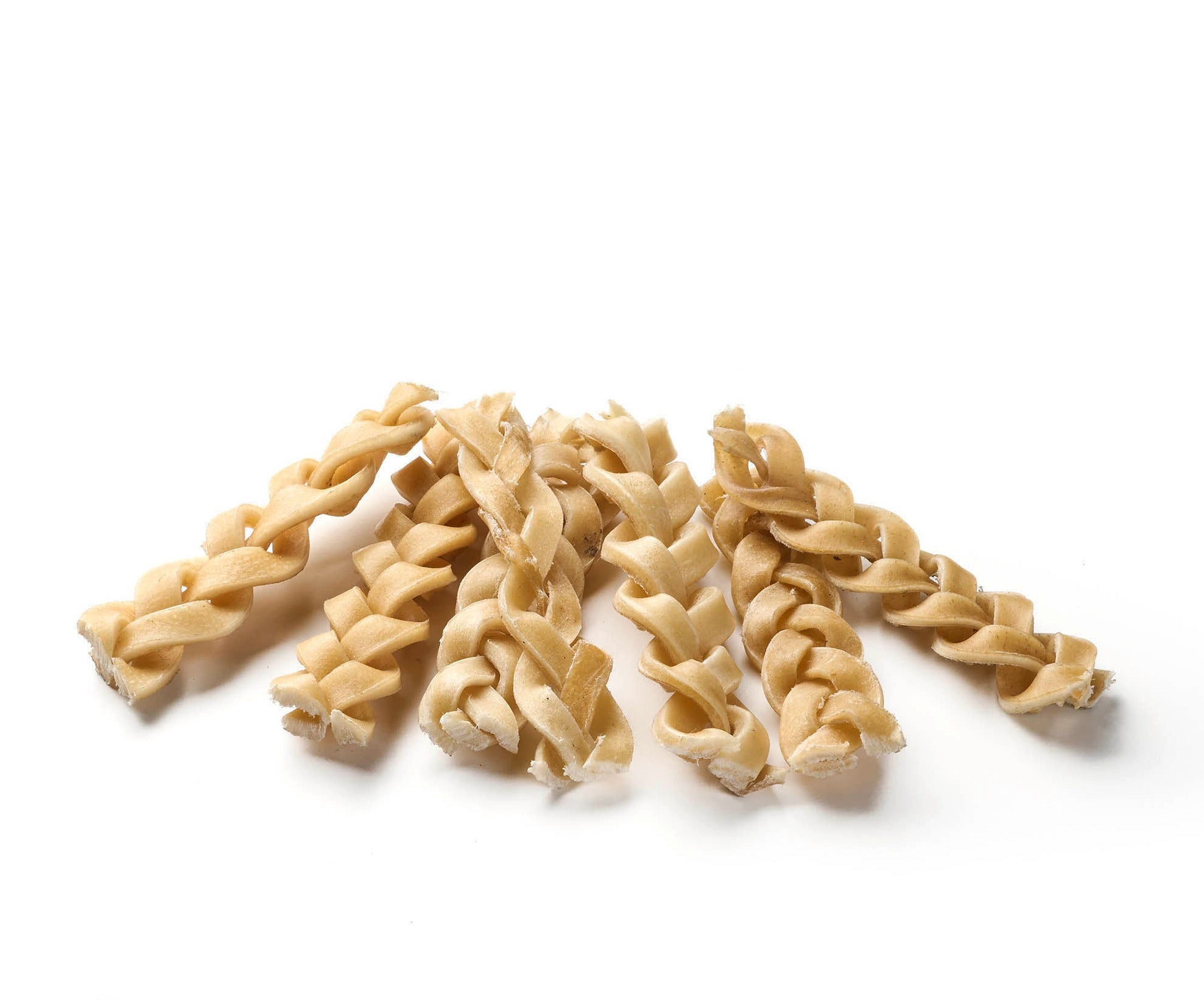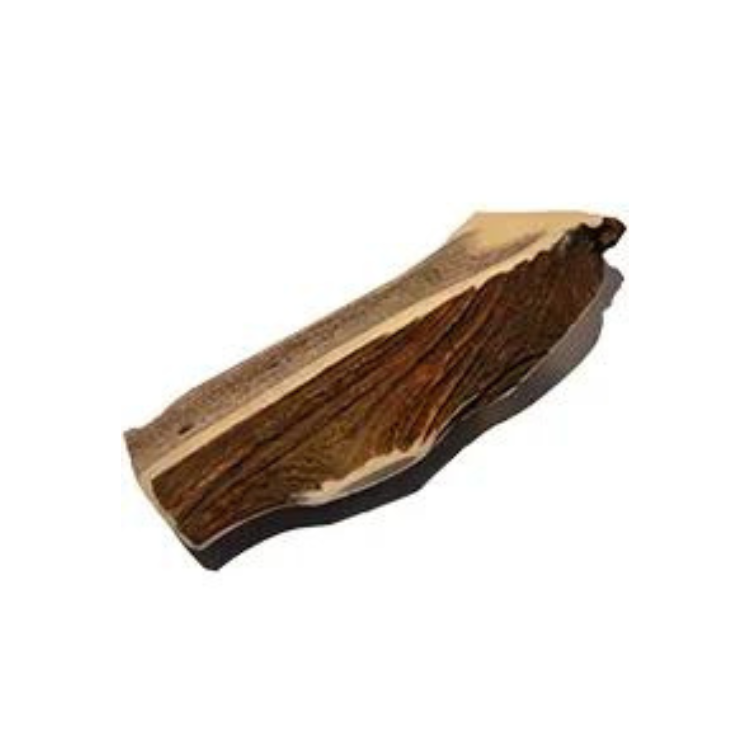
Fleas in dogs
Share
Imagine your faithful companion secretly putting on a flea circus, with acrobats who never stop jumping and bloodsuckers who keep you itchy. Doesn't sound very appealing, does it? Fleas may be tiny, but their impact on your dog's life and your home can be gigantic. These wingless insects feed on your dog's blood and leave more than a few itchy spots in their wake.
A flea infestation is not only annoying, but can also cause serious health problems. Constant scratching and biting can lead to skin irritation and infections, while allergic reactions to flea saliva can cause significant discomfort. And that's not all - fleas also transmit diseases such as anemia and tapeworm infections, which can be dangerous for both your dog and you.
Content: Fleas in dogs
- Life cycle and biology of fleas
- Differences between fleas and mites
- Symptoms and diagnosis of a flea infestation
- Treating a flea infestation
- Immediate measures in case of acute infestation
- Topical treatments
- Oral medications
- Natural and homemade remedies
- Prevention and long-term protection
- Regular care and hygiene
- Spot-on preparations and flea collars
- Environmental treatment and cleaning
- Natural prevention methods
- Risks and complications of untreated flea infestation
- Special situations and precautions
- Fleas in puppies and older dogs
- Travelling with your dog and flea prevention
- Fleas and other pets in the household
- Conclusion
High-quality dog chews for your faithful companion can be found here!
Life cycle and biology of fleas
Fleas go through a complex life cycle consisting of four stages: egg, larva, pupa, and adult flea. This cycle can last from several weeks to months, depending on environmental conditions. Fleas reproduce quickly, making effective control difficult. Adult fleas live and feed on the dog, while the other stages are mostly found in the dog's environment.
Differences between fleas and mites
Fleas and mites are different types of parasites that can affect dogs, but they differ in their behavior, biology and the symptoms they cause. Fleas are small, wingless insects that feed on the blood of their hosts and have a distinct jumping mechanism that allows them to move quickly from one host to another.
Symptoms of a flea infestation include intense scratching, red, inflamed patches of skin, and flea droppings in the dog's fur. Mites, on the other hand, are tiny arachnids, often too small to be seen with the naked eye. There are several types of mites that can infest dogs, including mange mites and ear mites, which cause skin irritation, hair loss, flaking, and intense itching.
Diagnosis of a mite infestation usually requires microscopic examination of skin scrapings by a veterinarian. While fleas can be easily identified by the naked eye and their characteristic jumps, detection of mites requires more specific diagnostic methods.
Symptoms and diagnosis of a flea infestation
Diagnosis of a flea infestation is usually done by a thorough examination of the dog and its environment. A flea comb can be used to find fleas and flea droppings in the coat. This involves systematically combing through the dog's coat and then tapping the comb on a white cloth or paper to reveal any fleas or flea droppings. Flea droppings can be easily identified by moistening them with water, as they turn reddish-brown in color.
Veterinarians may also perform special tests to diagnose flea saliva allergies or other flea-borne diseases. These include skin scrapings to test for allergic dermatitis or blood tests to check for flea-borne diseases such as bartonellosis or tapeworm infections.
In some cases, microscopic examination of skin samples may also be necessary to ensure that symptoms are actually caused by fleas and not other parasites such as mites. An accurate diagnosis is crucial to ensure proper treatment and prevention.
Treating a flea infestation
Treating a flea infestation requires a comprehensive approach that includes both the dog and its environment. Various methods can be used to ensure that all life stages of the fleas are effectively controlled. It is important to eliminate both adult fleas and their eggs, larvae and pupae to prevent re-infestation.
Immediate measures in case of acute infestation
In the case of an acute flea infestation, quick action is required. Wash the dog with a mild flea shampoo to kill the adult fleas. A thorough vacuuming of the area is also necessary to remove flea eggs, larvae and pupae. Remember to empty the vacuum cleaner bag or container immediately afterwards to prevent the fleas from spreading again. In addition, all textiles that the dog comes into contact with, such as blankets and pillows, should be washed at a high temperature.
Topical treatments
Topical treatments such as spot-on products are widely available and effective. These products are applied directly to the dog's skin and kill fleas by attacking the insects' nervous system. It is important to follow the manufacturer's instructions carefully and apply the product evenly to the recommended area. These products usually provide protection against flea infestations for several weeks.
Treat your dog to something special with our chew products!
Oral medications
Oral medications are another option for flea control. These tablets work systemically, killing fleas that bite the dog. They are often a convenient alternative to topical treatments because they can be administered through food and have a long-lasting effect. Some oral medications work within hours and provide protection for up to a month or more.
Natural and homemade remedies
There are also natural and homemade flea control remedies, such as essential oils or vinegar solutions. However, these should be used with caution as they are not always as effective as chemical remedies and can cause skin irritation if used improperly. Some essential oils, such as lavender or lemongrass oil, can be diluted and applied to the fur to deter fleas.
It is important to test the tolerability of these products on a small area of skin first to ensure that they are safe for the dog. A holistic approach that includes both the dog and its environment is crucial to effectively combating flea infestation and preventing it in the long term.
Prevention and long-term protection
Long-term prevention is key to avoiding future flea infestations. There are several methods to keep your dog and his environment flea-free. By combining grooming, chemical preventatives and environmentally friendly methods, you can effectively control fleas.
Regular care and hygiene
Regular grooming and hygiene are crucial to keeping fleas away. Brush the dog regularly and bathe him when necessary to remove any fleas or flea eggs that may be present. Be sure to keep the dog's sleeping areas clean and wash his blankets and toys regularly at high temperatures. This will help eliminate flea eggs and larvae and prevent re-infestation.
Spot-on preparations and flea collars
Spot-on products and flea collars provide long-lasting protection against fleas. These products contain insecticides that kill fleas and prevent new ones from infesting the dog. Spot-on products are applied directly to the skin and provide protection for several weeks. Flea collars work continuously and can provide protection for several months. It is important to use and replace these products regularly to ensure they remain effective.
Environmental treatment and cleaning
Treating the environment is just as important as treating the dog. Vacuum frequently, especially in areas where the dog spends a lot of time, to remove flea eggs, larvae and pupae. Use special flea sprays or foggers to treat the home and eliminate any remaining fleas. Wash all textiles that the dog comes into contact with at high temperatures to kill eggs and larvae. Thoroughly cleaning the environment greatly reduces the risk of re-infestation.
Natural prevention methods
Natural prevention methods, such as sprinkling diatomaceous earth around the dog's environment, can also help keep fleas away. Diatomaceous earth is a fine powder that dries out and kills fleas when they come into contact with it. This method is environmentally friendly and safe for pets and people, but its effectiveness can vary. Some essential oils, such as lavender or lemongrass oil, can also be used to repel fleas, but should be used with caution to avoid skin irritation on the dog.
By combining these measures, you can effectively combat fleas and minimize the risk of re-infestation. Regular checks and consistent use of prevention methods are the key to a flea-free life for your dog.
Risks and complications of untreated flea infestation
An untreated flea infestation can cause serious health problems, including skin infections, allergies, anemia, and the transmission of tapeworms and other diseases. Long-term damage to the dog's skin and coat is also possible.
Fleas can cause significant skin irritation and itching, leading to intense scratching and biting by the dog. This can result in open wounds and secondary bacterial infections. A common problem is flea allergy dermatitis (FAD), an allergic reaction to flea saliva that causes severe itching and skin inflammation. Dogs with FAD often exhibit hair loss and inflamed skin patches that are made worse by persistent scratching and licking.
Another serious aspect of an untreated flea infestation is anemia, especially in puppies or older dogs. Since fleas feed on the dog's blood, a severe infestation can result in significant blood loss. Symptoms of anemia include weakness, pale mucous membranes, and fatigue. In extreme cases, this condition can become life-threatening.
Fleas also carry tapeworms, particularly the cucumber seed tapeworm (Dipylidium caninum). Dogs can become infected if they swallow fleas carrying the tapeworm larvae while grooming. Tapeworm infection can lead to weight loss, diarrhea, and general malaise. In addition, fleas can also transmit other infections and diseases, such as bartonellosis (caused by Bartonella bacteria), which can also cause serious health problems.
The long-term damage to a dog's skin and coat from an untreated flea infestation can be significant. Constant scratching and biting can lead to scarring, permanent skin changes, and hair loss. The affected skin can thicken and scar, increasing the risk of chronic skin problems.
It is therefore crucial to detect flea infestation early and treat it promptly to avoid these serious health risks and ensure the dog's well-being.
Special situations and precautions
Certain circumstances require special precautions to effectively control fleas and protect your dog's health. These include handling puppies and older dogs, traveling with your pet, and managing a multi-pet household.
Fleas in puppies and older dogs
Puppies and older dogs are particularly vulnerable to the negative effects of fleas. These animals often have weakened immune systems, making them less resilient to the stresses of a flea infestation. In puppies, a severe flea infestation can quickly lead to anemia because they have less blood volume. Likewise, older dogs, who may already have health problems, can suffer greatly from a flea infestation.
These animals require careful monitoring and, if necessary, gentler treatment. Use mild flea treatments suitable for puppies and seniors and consult a veterinarian regularly to ensure that treatment is effective and safe. Regular checks are essential to respond to early signs of infestation and prevent serious health complications.
Travelling with your dog and flea prevention
When traveling with your dog, special attention should be paid to flea prevention. Different geographic regions may have different types of fleas and a higher risk of infestation. Always bring flea protection and check your dog regularly, especially after being in new or busy areas such as parks, beaches or dog runs.
Before traveling, you should also check local flea control regulations and recommendations. Some areas may require special preventative measures. Make sure all flea treatments are current and effective before traveling. If you are staying in hotels or vacation rentals, check these locations for signs of fleas to protect your dog.
Fleas and other pets in the household
If you have multiple pets, it is important to treat and protect all of them at the same time. Fleas can easily pass from one animal to another, causing a new infestation. Untreated animals can act as a reservoir for fleas, jeopardizing the success of treatment.
Synchronize flea treatments for all pets in your household.
Use products that are appropriate for each animal, as not all products are safe for all species. For example, some flea treatments for dogs can be toxic to cats. Regular cleaning measures in the home, such as frequent vacuuming and washing of pet textiles, are also crucial to controlling the flea population and preventing re-emergence.
By taking these special precautions and working together in a coordinated manner, you can ensure that your dog and other pets are effectively protected from fleas and stay healthy.
Conclusion
Fleas on dogs are more than just an annoying inconvenience – they pose a real threat to the health of our four-legged friends. This article has shown that successful flea control requires a comprehensive approach that includes both the dog and its environment.
Prompt and effective treatment is crucial to avoid serious health problems such as skin infections, allergies and anemia. Chemical treatments often offer quick fixes, but natural methods and good hygiene can also be effective if used consistently.
Prevention is the best protection against fleas. Regular grooming, the use of appropriate preventatives and a clean environment are essential to prevent flea infestations. By taking a conscious and proactive approach, dog owners can ensure that their animals remain healthy and flea-free.
Delicious dog snacks for pure enjoyment are available from us!

